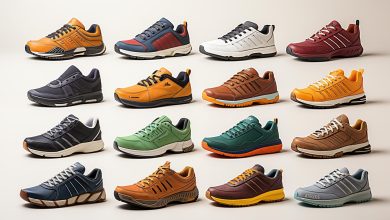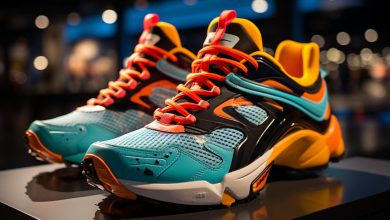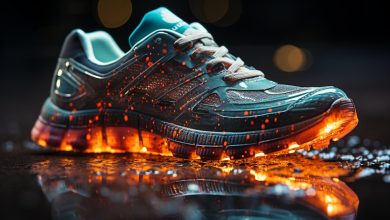When to Replace Your Running Shoes: Signs of Wear and Tear
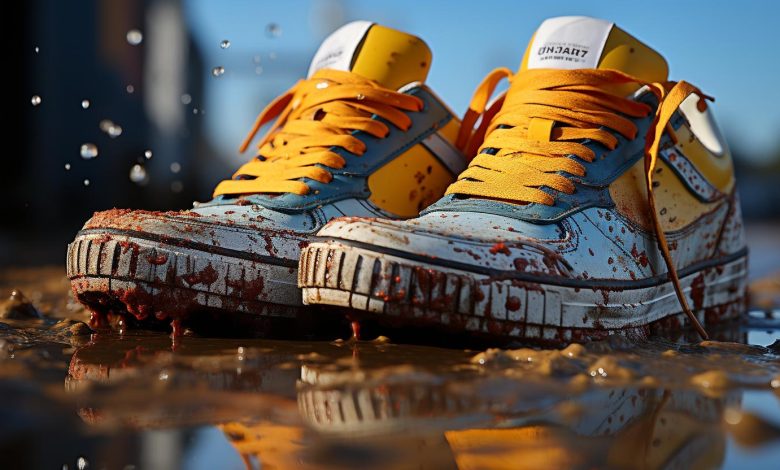
Have you been wondering when it’s time to replace your running shoes? Well, coincidentally, this article will provide you with the answers you’ve been looking for.
Understanding the signs of wear and tear is crucial in maintaining optimal performance and preventing injuries. In this guide, we’ll explore key indicators that indicate it’s time to say goodbye to your trusty pair of running shoes.
So, grab your sneakers and let’s dive into the world of shoe longevity!
Common Signs of Wear and Tear in Running Shoes
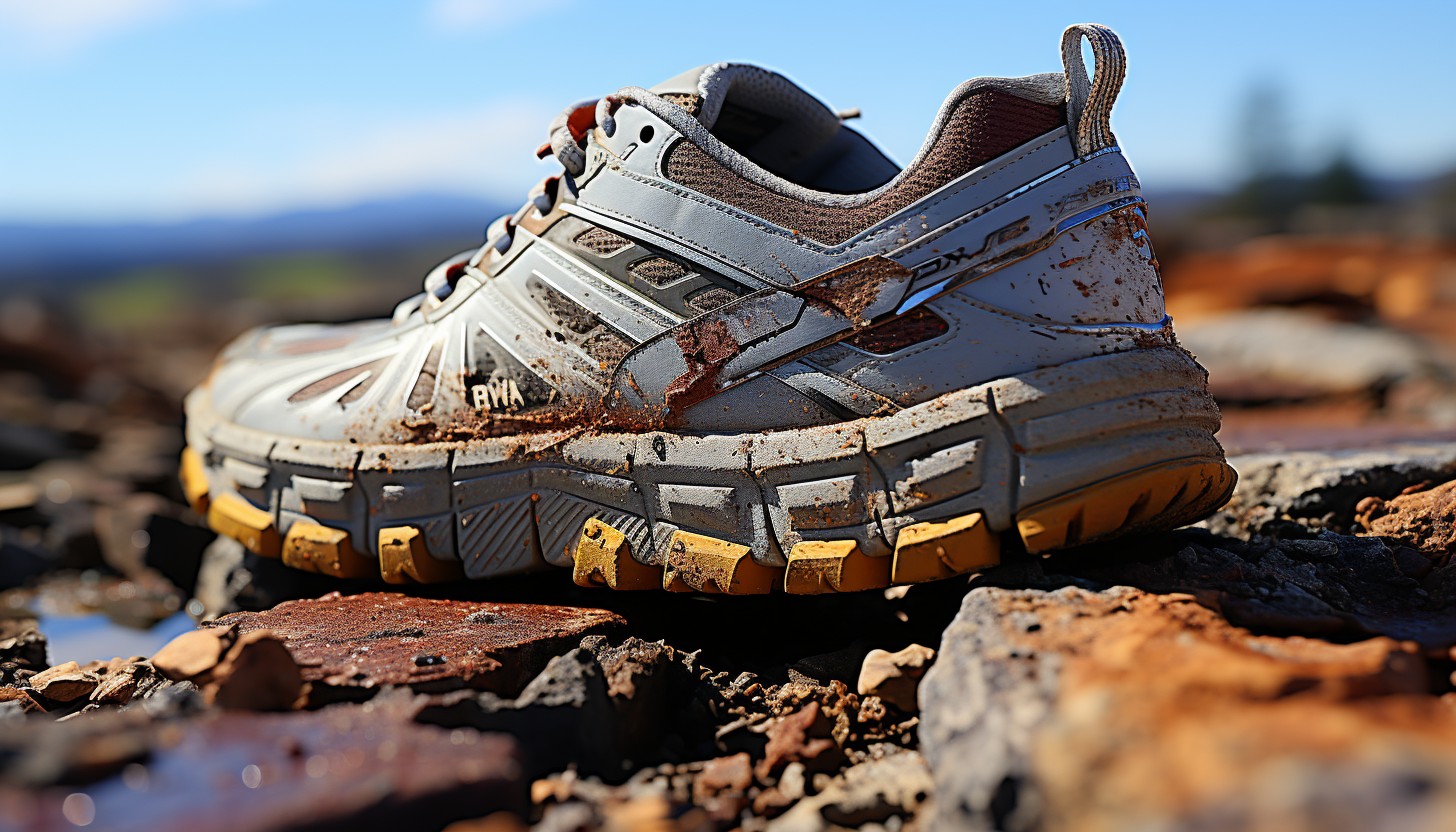
You’ll want to keep an eye out for some common signs of wear and tear in your running shoes. Proper shoe maintenance is essential for extending the lifespan of your running shoes and ensuring optimal performance during your runs.
One important sign to look out for is the wear pattern on the soles of your shoes. Uneven wear can indicate issues with pronation or supination, which may require a different type of shoe or additional support. Additionally, if you notice that the tread on the soles has worn down significantly, it may be time to replace your shoes as this can affect traction and stability.
Another common sign of wear is visible damage to the upper part of the shoe. This includes holes, tears, or loose stitching. Not only can these defects impact the structural integrity of the shoe, but they can also lead to discomfort or even injury while running.
To extend the lifespan of your running shoes, there are a few tips you should keep in mind. First, rotate between multiple pairs of shoes if possible. This allows each pair to have ample time to fully dry out between runs, reducing moisture-related damage and odor buildup.
Secondly, avoid exposing your shoes to extreme temperatures or direct sunlight for prolonged periods as this can cause materials like foam and rubber to deteriorate more quickly.
Finally, regularly clean your shoes by removing dirt and debris from both the upper and sole using a soft brush or cloth. This will help prevent any build-up that could potentially accelerate wear over time.
Understanding the Lifespan of Running Shoes

Understanding the lifespan of running shoes can help you determine when it’s time to get a new pair. Evaluating shoe durability and knowing how to prolong their lifespan are essential for every runner. To assist you in evaluating your running shoes, here is a table outlining key factors that affect their longevity:
| Factor | Impact on Shoe Lifespan |
|---|---|
| Mileage | Higher mileage leads to faster wear |
| Surface Type | Rough terrains wear out shoes quicker |
| Running Style | Heel strikers may wear out heels faster |
| Shoe Quality | Higher quality materials last longer |
| Maintenance | Proper care can extend shoe lifespan |
By considering these factors, you can assess the condition of your running shoes more accurately. Additionally, there are ways to prolong the life of your shoes such as rotating them with another pair and allowing them sufficient time to dry between runs.
Understanding the lifespan of running shoes is just one aspect of keeping your feet well-supported and protected during runs. Now that you know how to evaluate shoe durability and prolong their lifespan, let’s explore when it’s time to replace your running shoes in more detail with our guide for runners.
When to Replace Running Shoes: A Guide for Runners
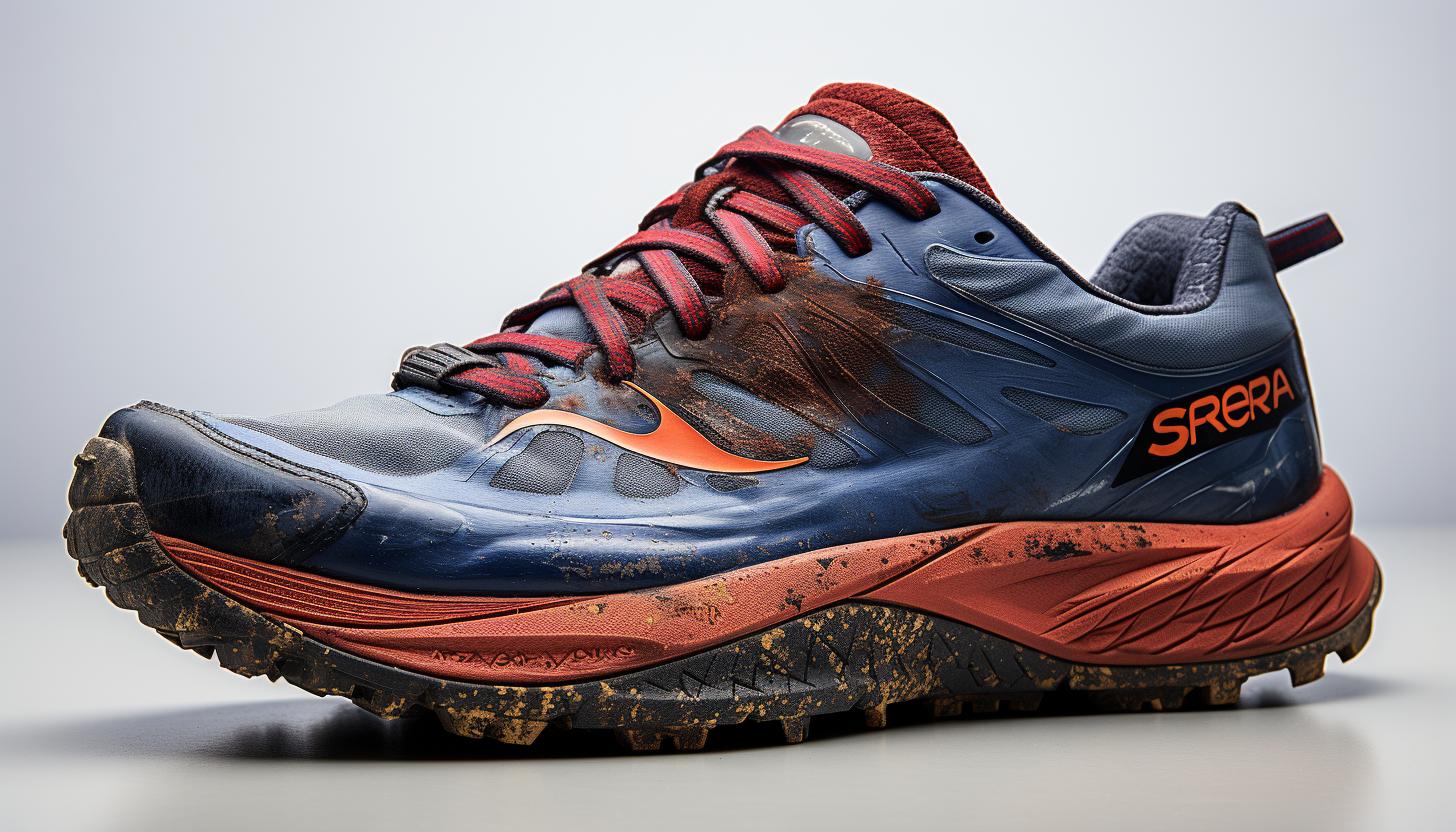
To determine if it’s time for new running shoes, take note of any discomfort or lack of support during your runs. Choosing the right running shoe for your foot type is crucial in preventing injuries and maximizing performance. Different foot types require different levels of cushioning, stability, and flexibility. It’s essential to visit a specialty running store where experts can assess your gait and recommend the most suitable shoe for you.
Once you’ve found the perfect pair, it’s important to properly care for and maintain them. Regularly cleaning your shoes can help remove dirt and debris that can cause premature wear. Avoid tossing them in the washing machine as this can damage the structural integrity of the shoes. Instead, use a soft brush or cloth with mild soap to gently scrub away any dirt.
Additionally, rotating between two pairs of running shoes can extend their lifespan by allowing each pair to fully dry out between runs. This helps prevent odor-causing bacteria from proliferating.
Remember that even with proper care, all running shoes eventually wear out. In the next section, we will explore key indicators that your running shoes need replacing so you can stay injury-free and continue enjoying your runs.
Key Indicators That Your Running Shoes Need Replacing

If you’ve been using your running shoes for a while, it’s important to look out for signs of deterioration. Regular usage can cause wear and tear on your shoes, which can affect their performance and potentially lead to injuries.
Here are three key indicators that your running shoes may need replacing:
1. Sole Wear: Take a close look at the tread pattern on the sole of your shoes. If you notice significant wearing down or flattening of the tread, it’s time to consider getting a new pair. The lack of traction can decrease stability and increase the risk of slips.
2. Cushioning Loss: Press down on the midsole of your shoe with your thumb. If you feel less cushioning than when you first bought them, this is a sign that the midsole has worn out. Reduced cushioning can result in increased impact forces on joints and muscles, leading to discomfort or even injury.
3. Signs of Improper Fit: Pay attention to any changes in how your feet feel during runs, such as hot spots, blisters, or pain in specific areas like the arches or heels. These could be indications that your current shoes no longer fit properly and need replacing with ones that offer better support and fit.
To extend the lifespan of your running shoes, rotate them with another pair if possible and allow them to fully dry between runs. Avoid excessive exposure to sunlight or extreme temperatures which can accelerate deterioration. By being proactive and recognizing these signs early on, you can ensure optimal performance and reduce the risk of injury while enjoying your runs for longer periods with well-fitted shoes.
Evaluating the Condition of Your Running Shoes: What to Look for
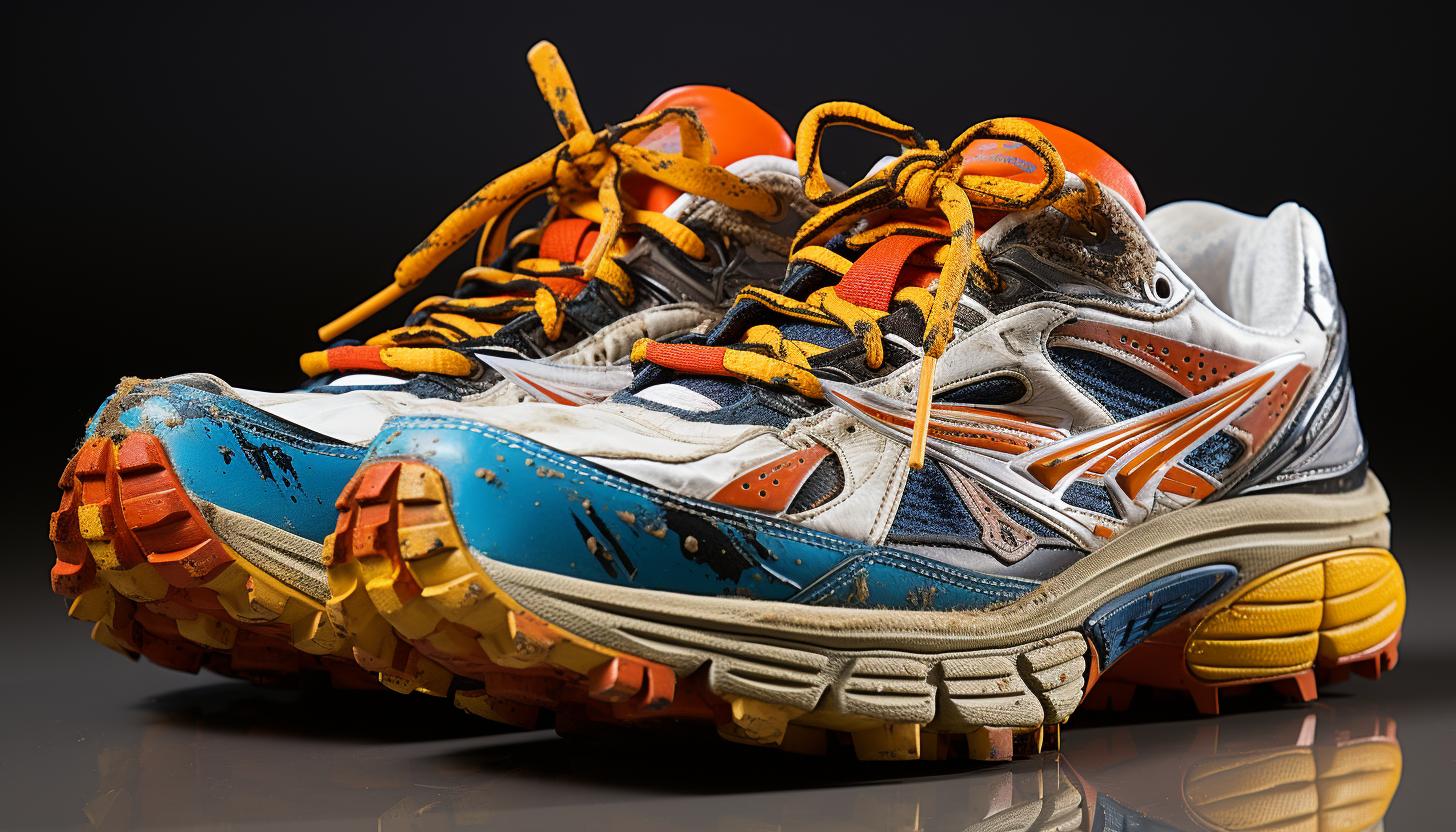
When evaluating the condition of your running shoes, pay attention to the tread pattern on the sole for any significant wearing down or flattening. The tread pattern is an important indicator of how much life is left in your shoes and can affect your performance and safety while running.
As you run, the friction between your shoe and the ground causes gradual wear on the sole. Over time, this wear can lead to a loss of traction and stability, increasing your risk of slips and falls.
In addition to examining the tread pattern, it’s crucial to evaluate the cushioning of your running shoes. Cushioning provides shock absorption and protects your feet from impact forces during each stride. When cushioning starts to deteriorate, you may experience discomfort or pain in your feet, ankles, knees, or hips.
To assess shoe cushioning, press on different areas of the midsole with your thumb. If you notice excessive compression or a lack of responsiveness, it may be time for new shoes.
Signs of sole wear include visible thinning or bald spots in high-impact areas such as the heel or forefoot. Examine both sides of each shoe for symmetry in wear patterns; uneven wear could indicate imbalances in gait mechanics that need addressing through proper footwear or corrective exercises.
Remember that replacing worn-out running shoes is essential not only for optimal comfort but also to prevent injuries caused by inadequate support and cushioning. Regularly evaluating these factors will help ensure you always have reliable footwear for safe and enjoyable runs.
Conclusion
Congratulations! You’ve reached the end of this informative journey on when to replace your running shoes. Hopefully, you now have a clearer understanding of the signs of wear and tear in your trusty footwear.
Remember, keeping an eye on the key indicators and evaluating their condition is crucial for maintaining a safe and comfortable running experience.
So, next time you lace up those shoes, don’t forget to give them a thorough inspection! Happy running, and may your new pair take you to new heights (literally!).



